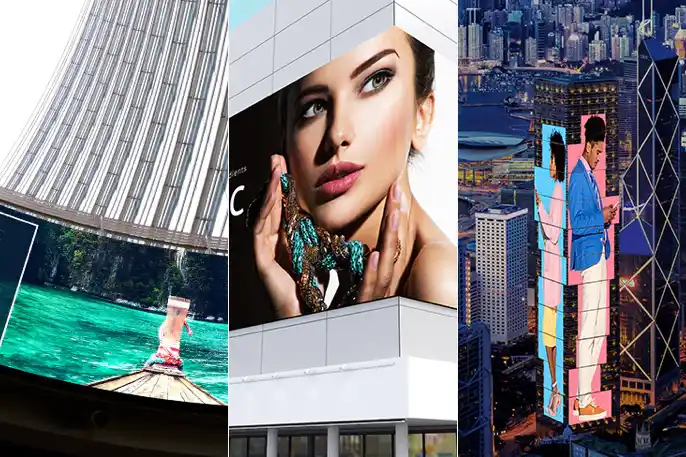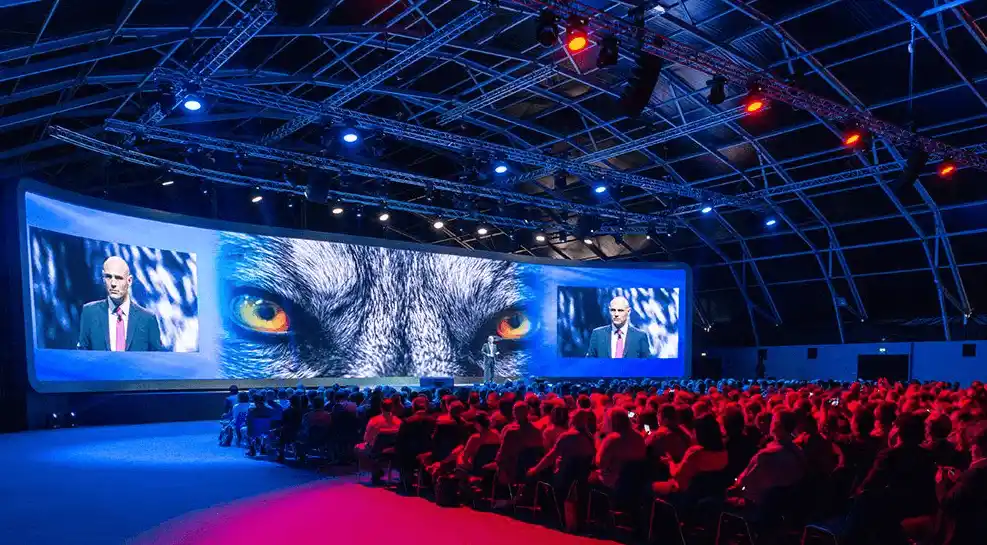A Complete Guide to Viewing Angles in Modern Displays
As you walk past an illuminated storefront, the video in its window grabs your attention. When you move a little to the right, all the colors and motion disappear. Reds become sickly and whites dull. You're left with a ghostly image of what you saw a moment ago. This is the invisible viewing angle, which determines whether you get the whole show or just the remnants. This barrier is smaller in modern LED displays, but still there. Therefore, understanding it will help you maximize the performance of your 3D LED Display.

Modern Outdoor LED Display and Its Angles
As you move to one side of the rental LED display, the light must travel further, scattering as it goes. Blues and greens are the first to fade, while reds remain longer. The picture will warm or cool depending on how you look at it.
- Light scatters sideways.
- Wavelengths fade unevenly.
- Colors warm off-center.
- Physics limits the view.
- Wider angles win.
- Real life demands.
It's not a problem with your vision; this is physics at work. In the real world, where people don't stand perfectly still, the wider the angle is before the party ends, the better it performs on the screen.
The Stage of LED Packaging
The packaging of LEDs is the key to the drama surrounding viewing angles. Three color chips are packed into a tiny dome on surface-mount LEDs, which spreads light out like a photographic softbox.
- SMD spreads light.
- COB widens cones.
- DIP narrows the beam.
- Packaging changes reach.
- 3D needs width.
- Ask the maker.
The chip-on-board technology seals all the photons under one lens and pushes them outwards in a wider cone. The older dual-in-line packages are shaped like lollipops, and they emit light directly ahead. They're great for road signs that you see straight on, but terrible for everything else.
Pixel Pitch Paradox
As if cramming in too many people onto a balcony, you'd expect that cramming even more pixels would reduce the angle. It's often the reverse. Smaller light sources are produced by tighter pitches, and these smaller light sources behave more like point lights, scattering less when you move away from the axis.
- Tighter pitch widens.
- Smaller sources scatter.
- 1.2 mm excels.
- Cost rises fast.
- Match viewing distance.
- Balance price performance.
Brightness But Not Being Loud
Excessive brightness causes internal reflections, leaks out sideways, and ruins the edges. Manufacturers who are smart add anti-reflective or micro-louvers to the screen, which act as sunglasses.
- High brightness narrows.
- Photons leak sideways.
- Louvers control spill.
- Coatings reduce glare.
- Balance light reach.
- Avoid edge washout.
Contrast on the Edge
The contrast doesn't drop as soon as the brightness drops; instead, it falls in layers. The first to turn gray are the blacks, because light that comes from adjacent pixels is reflected at an acute angle. From the side, deep shadows that appeared inky from the front appear foggy, and fine text is lost.
- Blacks gray out.
- Stray light invades.
- Shadows lose depth.
- Text blurs sideways.
- Test off-angle contrast.
- Save event impact.

This can make the difference in a 3-day LED rental display that attracts crowds or one that leaves them empty. You'll thank your eyes later if you test the contrast of the display at 45 degrees.
Geometry and Curved Screens
It's not just about style. By gently bending the display, every pixel will tilt a little bit towards the audience. This effectively increases the sweet spot of the display without having to change the LEDs.
- Curves widen the view.
- Pixels tilt inward.
- Concave pulls close.
- Convex hugs the audience.
- Micro-curves enhance 3D.
- Math adds degrees.
Weather's Relation with Angle
If you intend to use the display outdoors all year, look for automotive resins or conformal coatings. Ask for accelerated ageing data from a reputable LED manufacturer. Add ten percent to their claims.
- Weather degrades angles.
- Heat warps lenses.
- UV yellow coatings.
- Encapsulant fails fast.
- Demand aging data.
- Add a safety margin.
About Calibration
Professional calibrators swing spectrometers through an arc and adjust gamma curves every 10 degrees. It takes hours to complete and is expensive, but it results in a screen that looks the same whether you are sitting at the front or peeking from the hall.
- Calibrators swing spectrometers.
- Gamma adjusts per degree.
- Hours ensure consistency.
- Hallway views match.
- Calibrate rental setups.
- Prevent viewer complaints.
The 30-Degree Rule and Human Eyes
It's actually a bowl-shaped structure, which has been tuned by evolution to provide a field of vision that's sharp for about sixty degrees. If you sit ten feet away from a screen six feet in diameter, the edges are already more than thirty degrees out of center.
- Retina curves naturally.
- Sixty degrees sharp.
- Ten feet hits thirty.
- Narrow forces turn.
- Theaters set the standard.
- Apply to spaces.
Modern LED Display Manufacturer at their Best!
If you're ready to experience displays that refuse to fade no matter where you stand, visit Cinstar LED. Their lineup includes everything from weatherproof LED outdoor displays that can withstand sideways sunlight to flexible rental LED displays that curve and calibrate as needed.
- Decades of experience.
- Wide range of products.
- Quality name in the industry.
- Experts with expertise.
- Proper assistance and more.
Conclusion
It's not about trying to chase specs, but about making sure that every eye in the room is on an equal level. If you get it right, your screen will disappear, leaving only the things necessary for getting the attention of audiences. Finally, immerse yourself in a series of displays from the top LED Display Manufacturer in Cinstar LED.
FAQs
How does temperature affect the viewing angle?
The extreme heat can soften lens materials, causing them to narrow the cone.
Is it possible to fix an angle that is too narrow with software?
The software can boost the edge brightness and stretch gamma, but cannot create light where none exists.
Are Transparent LED displays subject to the same laws?
The exit angle must be mirrored both on the front and back of the screen, as light has to travel through it to reach the background.
Do you have to choose between resolution and viewing angle?
Current tech can sometimes result in wider angles and slightly softer pixels. Manufacturers who balance these two factors will allow you to avoid having to make a choice.
